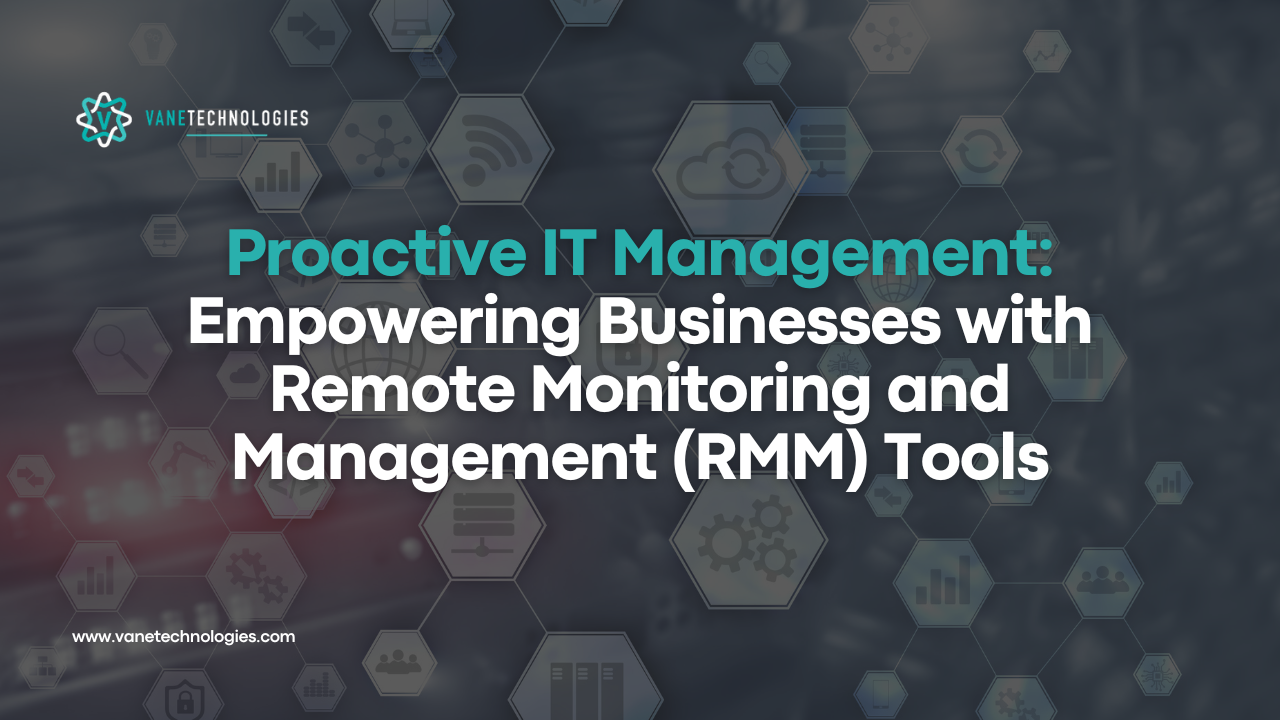
BLOGS

Proactive IT Management: Empowering Businesses with Remote Monitoring and Management (RMM) Tools
Businesses heavily rely on their IT infrastructure to drive productivity, efficiency, and innovation. However, maintaining and managing an IT environment can be complex and challenging, especially with the increasing demand for remote work capabilities. That's where Remote Monitoring and Management (RMM) tools come into play, providing organizations with proactive monitoring and management solutions. In this article, we'll delve into the world of RMM, exploring the benefits it offers and the technologies that enable efficient IT infrastructure oversight.
What is RMM?
Remote Monitoring and Management (RMM) refers to the process of remotely monitoring, managing, and controlling IT systems and infrastructure. It allows IT teams to gain real-time insights into the health, performance, and security of their networks, devices, servers, and applications. By leveraging RMM tools, businesses can proactively identify and address potential issues before they escalate, ensuring optimal performance and minimizing downtime.
Proactive Monitoring for Enhanced Productivity:
With RMM, businesses can monitor critical aspects of their IT environment, including network connectivity, server health, system utilization, and application performance. By continuously monitoring these elements, IT teams can identify and resolve bottlenecks, address potential security vulnerabilities, and optimize resources for enhanced productivity. Proactive monitoring ensures that businesses can stay ahead of potential issues, minimizing disruptions and maximizing operational efficiency.
Streamlined Patch Management:
Keeping software and systems up-to-date is crucial for maintaining a secure IT environment. RMM tools simplify and automate the patch management process, ensuring that all devices and applications are regularly updated with the latest security patches and software updates. This proactive approach minimizes the risk of security breaches, protecting sensitive data and ensuring compliance with industry regulations.
Efficient Asset Inventory and Tracking:
Maintaining an accurate inventory of IT assets is vital for budgeting, resource allocation, and risk management. RMM tools provide businesses with comprehensive asset tracking capabilities, allowing them to monitor hardware and software assets across their network. This visibility enables IT teams to track asset lifecycles, identify outdated or underutilized resources, and make informed decisions regarding upgrades or replacements.
Remote Access and Support:
In a remote work environment, having the ability to troubleshoot and provide support remotely is essential. RMM tools enable IT teams to securely access and control remote devices, regardless of their location. This remote access capability empowers IT professionals to diagnose and resolve issues promptly, reducing the need for on-site visits and minimizing downtime. Furthermore, remote support saves both time and resources, enabling businesses to maintain seamless operations.
Conclusion:
Remote Monitoring and Management (RMM) tools have revolutionized the way businesses manage their IT infrastructure. By adopting proactive monitoring, streamlined patch management, efficient asset tracking, and remote support capabilities, organizations can ensure optimal performance, enhance productivity, and strengthen security. As the digital landscape continues to evolve, implementing RMM tools becomes increasingly crucial for businesses to stay competitive and resilient in an ever-changing technological landscape. #RMM #ProactiveMonitoring #ITInfrastructure #RemoteManagement #EfficientIT #TechSolutions #ITSupport #ProductivityBoost #SecureSystems #DigitalTransformation
![]() 1200 Brickell Ave., Suite 1950 Miami, Florida, 33131
1200 Brickell Ave., Suite 1950 Miami, Florida, 33131
![]() 1654 Calle Tulipan, Suite 100 San Juan, Puerto Rico
1654 Calle Tulipan, Suite 100 San Juan, Puerto Rico
![]() Manquehue Sur 520, oficina 205 Las Condes, RM, Chile
Manquehue Sur 520, oficina 205 Las Condes, RM, Chile






